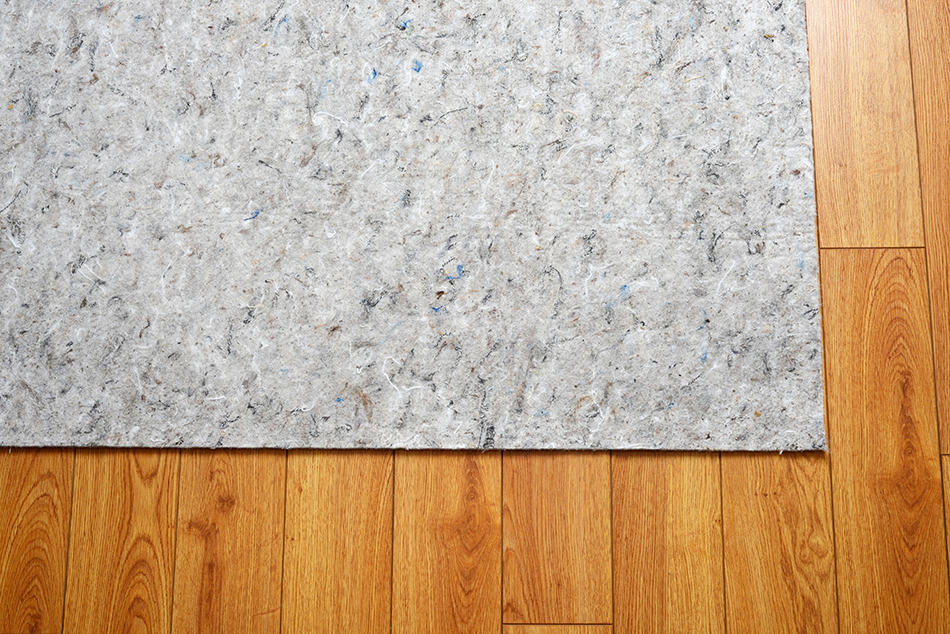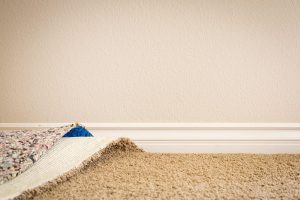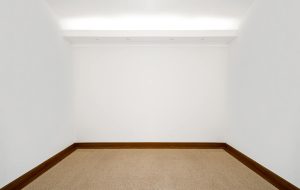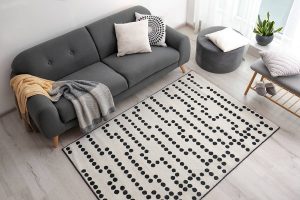Having squeaky floors under your carpet is annoying, but it is not a sign of a major structural problem. If your floor is making a sound, it simply means that there is a gap between the subfloor and the joist.
This problem can be easily solved, and it will only take a few hours. However, you have to be careful to avoid damaging your carpet. So, how do you fix a squeaky floor under your carpet?
Materials
To fix squeaky floors under your carpet, you’ll need the following material:
- Stud Finder
- Hammer
- Masking Tape or Sticky Notes
- Electric Drill
- Floor Repair Kit
If you’re not going to use a floor repair kit, you’ll also need the following:
- Deck or Drywall Screws
- Pliers
Find the Squeak
To find the squeaky floor, you have to walk over the carpet until you locate the squeaks. Afterward, mark the spot with masking tape or a sticky note. When you found the squeak, don’t stop. Usually, a 4×6 area will have several squeaky floors.
When locating the squeaks, you can also ask for help and let the other person walk across the carpeted floor. Remember, you can do this step alone; however, having a helper can make the process quick and efficient.
Find the Joist
Once you found the squeak, the next step is to find the joist. As you know, joists are beams underneath your house, and their role is to support your house’s weight.
Most houses today have floor joists that are 16 inches apart. This is an advantage because once you found a joist, you can easily locate the other joists.
Unfortunately, if your home was built in the 19th century, its floor joist will have a different format. If this is the case, there are several ways to find the joists, which include the following:
Hammer
The first method to find a joist is to tap the floor with a hammer. In doing this step, tap the floor in a line parallel to the joists’ direction. At some point, you will hear a change in the sound. Remember, once you hit a joist, it will produce a solid or thicker sound. As you move away from the joist, the sound will be hollow. Finally, you can mark the spot with masking tape or a sticky note.
Stud Finder
One of the easiest ways to find a joist is to use a stud finder, which is a tool that can detect beams or studs behind a surface.
To do this step, you can simply turn on the tool and move it slowly over the carpeted floor. Typically, a stud finder will turn on a light or make a sound when it is over a joist. Afterward, you can mark the spot with masking tape or a sticky note.
Joist Finding Tool
The third method to find a joist is to use a joist-finding tool, which is included in a floor repair kit.
A joist-finding tool looks like a long screw with minimal threads. To use this tool, you can drill it into the carpet until the threads reach the subfloor. Don’t worry; the screw will not damage your carpet.
When the threads reach the subfloor, they will either shoot through or hold onto a joist. If you didn’t hit a joist, you can move and drill again.
Insert Screws
There are two ways to insert screws. The first method by to use the special crews included in a floor repair kit. If you don’t have a kit, you can also use an alternative method.
Using A Floor Repair Kit
If you’re using a floor repair kit, the first step is to place the attachment included in the kit into your electric drill. Next, place the special screws on the drill bit. Afterward, you can push the tripod over a joist. Remember, the tripod should be over one of the ends of the joist in the squeaky area.
When pushing the tripod, you have to make sure to use your body weight to ensure that the subfloor is lowered to the joist. From there, you can put the screw into the tripod’s hole and drill. Keep in mind that the tripod is designed to stop the screw once it hit the right point.
Once you’ve inserted the screw, you can move to the other end of the same joist and repeat the procedure. Afterward, you can do the whole step to the other joists that are in the squeaky area.
Without Using a Floor Repair Kit
If you’re not going to use a floor repair kit, you’ll need a set of deck or drywall screws that are at least three inches long. When buying screws, pick those that don’t have threads at the top.
You can start this step by driving the screw into the carpet. Remember, you should drive the screw over the joist that is at the one end of the squeaky floor.
Afterward, drive the screw until it touches the top of the carpet. You have to repeat this procedure at the other end of the joist. Then, you can move to the other joists of the squeaky floor and repeat the whole step.
Drive the Screws
Once you’ve inserted the screws at each end of the joist, the next step is to tie a string around one of the screws and stretch the string to the other screw that is on the other end of the same joist. Afterward, drive screws into the floor. The screws should be eight inches apart.
Once you’ve finished the whole line, you can move the string to the next joist, then repeat the whole step.
Remove the Screw Heads
The last step is to remove the screw heads. If you’re using a floor repair kit, the screw heads will easily break off. However, if you’re using deck or drywall screws, this step will be a bit challenging because these types of screws are designed to be hard.
To break the screw heads, you’ll need to use a pair of channel lock pliers. From there, you can drip the head of the screw with the pliers, then move the pliers back and forth until the head breaks off.







